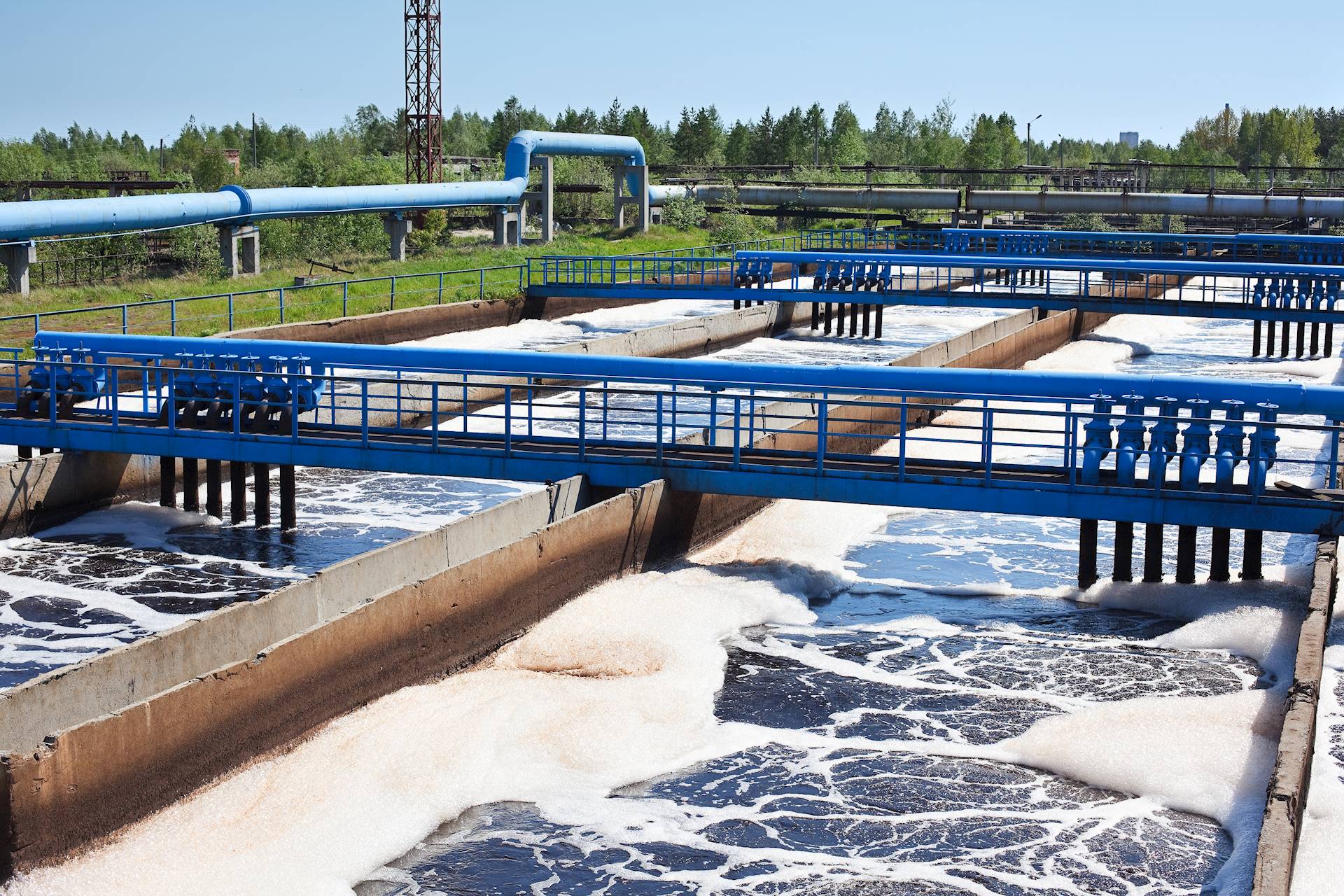 A push to modernize and improve efficiencies at wastewater treatment facilities in the United States has increased because of large amounts of electricity usage. According to a 2013 U.S. Environmental Protection Agency guide on energy efficiency in water and wastewater facilities, 35% of typical municipal energy budgets in the U.S. is used by water and wastewater utilities, wastewater utilities’ energy use takes up 25%-40% of their operating budgets and drinking water and wastewater systems use about 3-4% of the country’s energy, contributing over 45 million tons of greenhouse gas emissions each year.
A push to modernize and improve efficiencies at wastewater treatment facilities in the United States has increased because of large amounts of electricity usage. According to a 2013 U.S. Environmental Protection Agency guide on energy efficiency in water and wastewater facilities, 35% of typical municipal energy budgets in the U.S. is used by water and wastewater utilities, wastewater utilities’ energy use takes up 25%-40% of their operating budgets and drinking water and wastewater systems use about 3-4% of the country’s energy, contributing over 45 million tons of greenhouse gas emissions each year.
Wastewater treatment plants can identify energy efficiency opportunities through energy assessments conducted in-house or by consultants. For some states, free assessments are available by outside companies. The Illinois Environmental Protection Agency offers a free Wastewater Treatment Energy Assessment Program for publicly owned facilities that includes recommendations for energy efficiency and applicable incentives and funding. Some power generators and electric co-ops offer other energy efficiency programs, free energy audits and rebates for energy-saving equipment.
An energy assessment may generate multiple energy efficiency opportunities within the plant, such as optimizing treatment with fine bubble aeration, high-efficiency motors and pumps, high-efficiency lighting, variable frequency drives and, for a facility with an anaerobic digester, combined heat and power systems to generate a plant’s own heat and power. After an assessment, a plant must determine which upgrades to implement and finance. Energy Star’s Cash Flow Opportunity Calculator allows a plant to compare buying equipment versus financing it.
Incentive programs that provide cash deductions, loans, grants or reductions for energy efficiency are available for wastewater treatment facilities. Some programs are established by entities such as Ameren Illinois, the Illinois Clean Energy Community Foundation, the New York State Energy Research and Development Authority, Efficiency Vermont, the Energy Trust of Oregon, the Texas Water Development Board, the U.S. Department of Agriculture and the U.S. Department of Energy. Electrical utility incentives available in each state can be found through the Database of State Incentives for Renewables and Efficiency. Local government-owned facilities can find programs and resources for a wastewater treatment facility with the EPA’s query tool. The EPA offers state revolving funds across the U.S. and Puerto Rico through loans to finance improvements in these facilities.
For more information about increasing energy efficiency at a wastewater treatment facility, contact Lisa Ulrich at lulrich@hanson-inc.com.